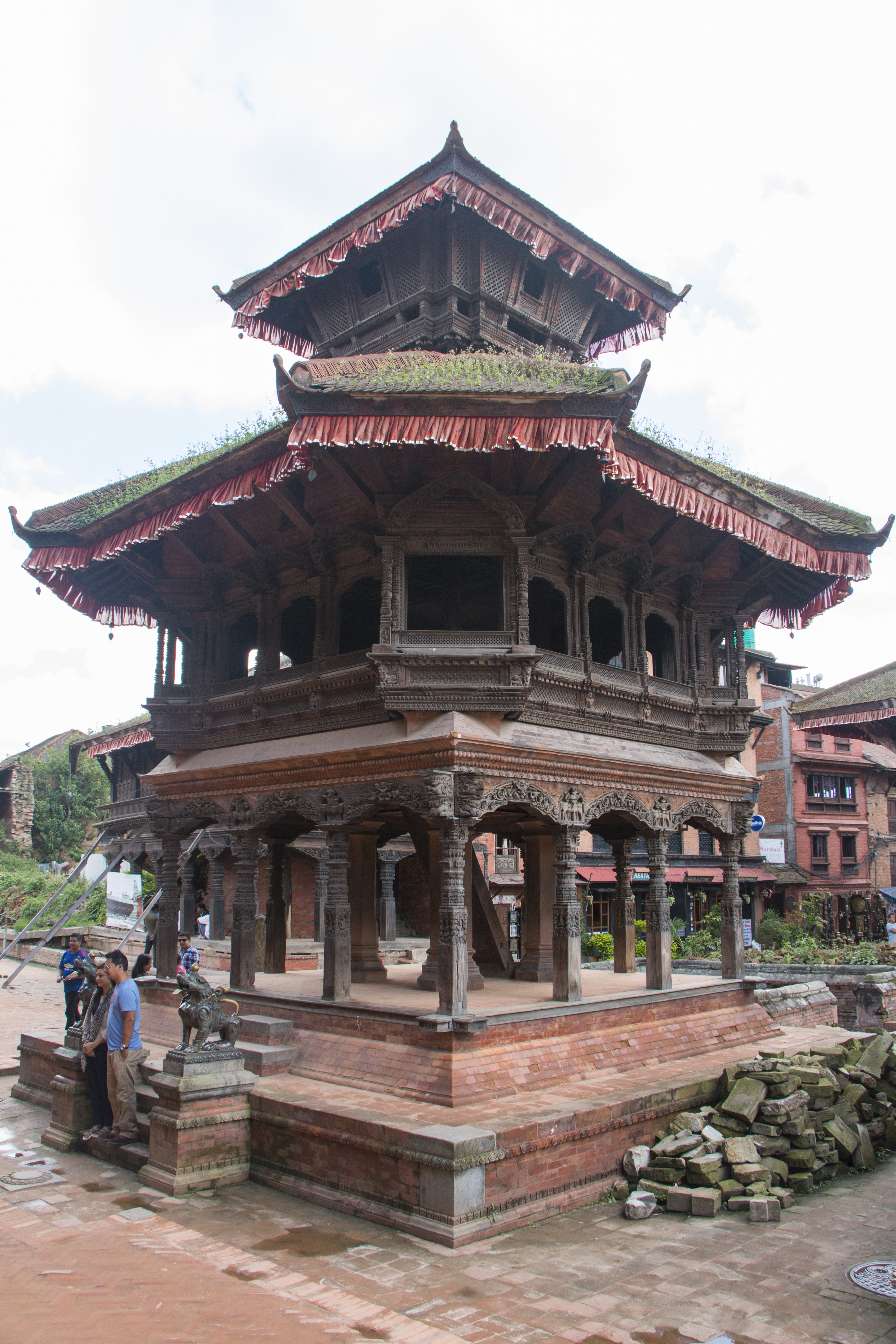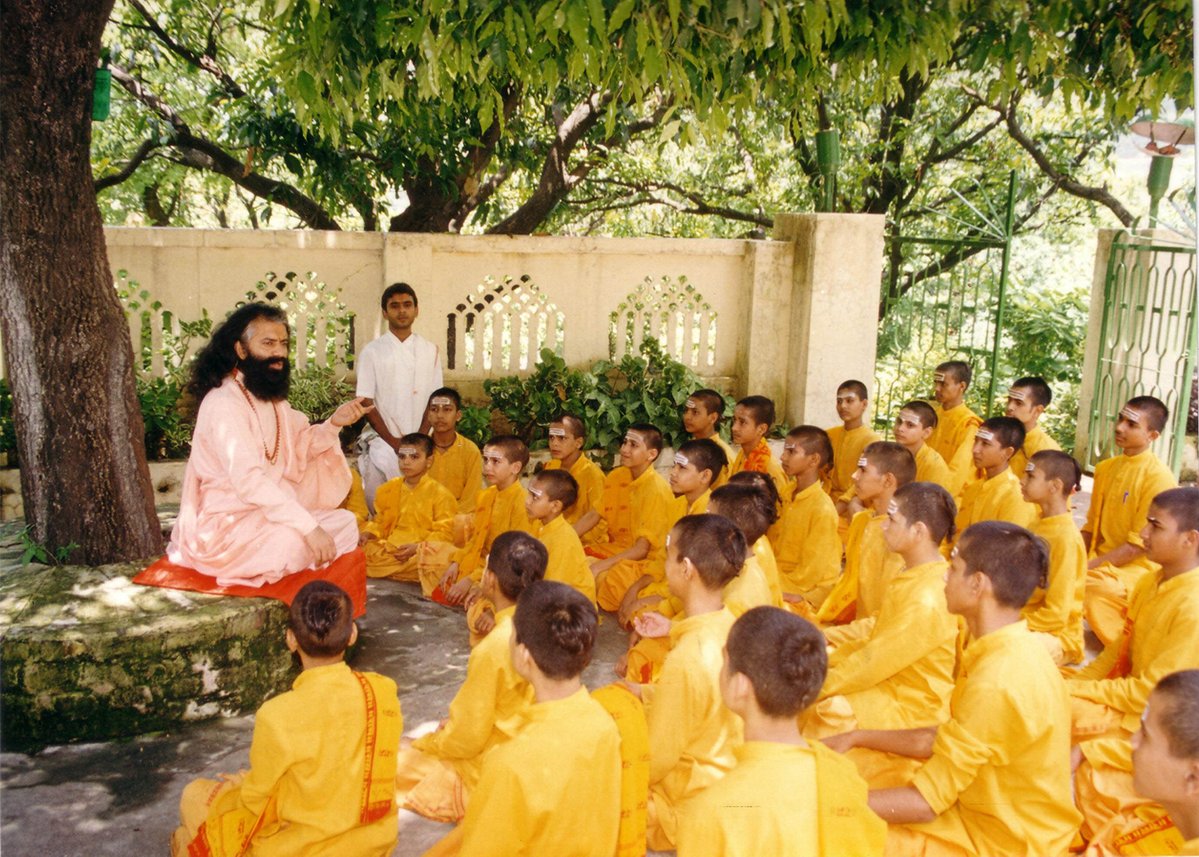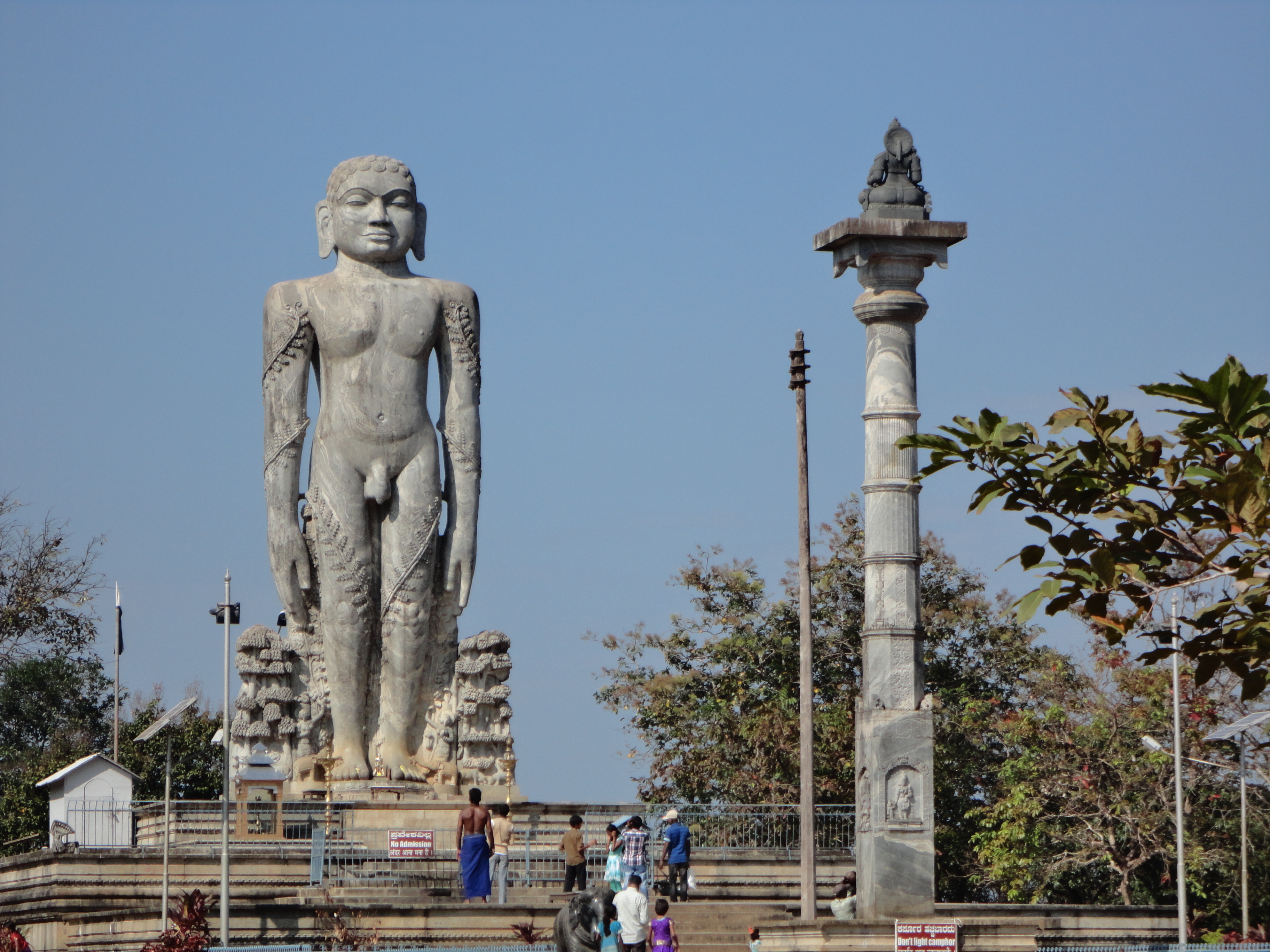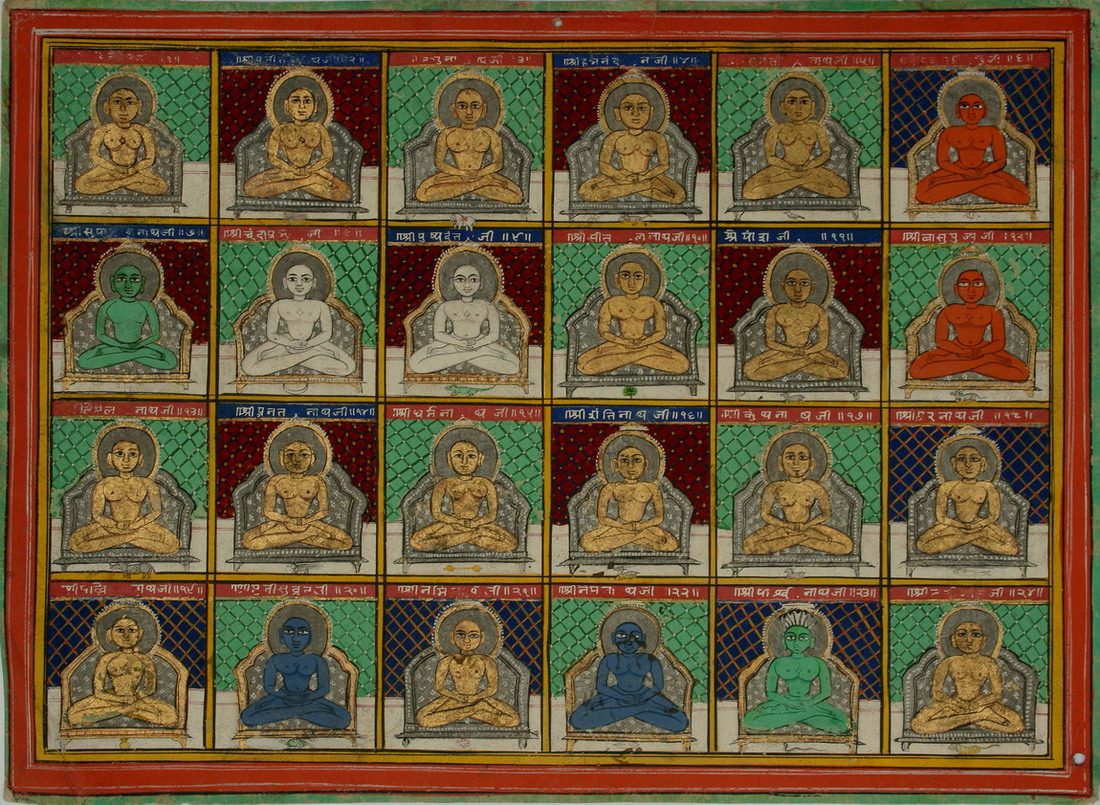|
Pisanhari Ki Madiya
Pisanhari ki Marhia is a Jain temple built in the 15th century and located in the city of Jabalpur in Madhya Pradesh, India. The temple is named after its creator, a local woman who, according to legend, paid for the construction of the temple with the money she saved from milling flour. Many other temples have since been added making this a Tirtha (Hinduism), tirtha. History The original temple was contains two pratimas installed in 1442 CE. The name derives from the word "pisanhari", meaning a woman engaged in the work of manual Milling (machining), milling of flour. According to legend, Pisanhari was a poor woman who saved enough money from milling flour to construct the temple. A statue of Pisanhari is at the temple's entrance, and the Quern-stone, quern stones are still kept on top of the entrance gate of the marhia. The temple complex includes inscriptions. Though they have not yet been deciphered, they are believed to be from the 14th century. Architecture The Pisan ... [...More Info...] [...Related Items...] OR: [Wikipedia] [Google] [Baidu] |
Jainism
Jainism ( ), also known as Jain Dharma, is an Indian religions, Indian religion whose three main pillars are nonviolence (), asceticism (), and a rejection of all simplistic and one-sided views of truth and reality (). Jainism traces its spiritual ideas and history through the succession of twenty-four , supreme preachers of ''dharma''. The first in the current time cycle is Rishabhadeva, who tradition holds lived millions of years ago; the 23rd is Parshvanatha, traditionally dated to the 9th century Common Era, BCE; and the 24th is Mahāvīra, Mahavira, who lived . Jainism is considered an eternal ''dharma'' with the guiding every time cycle of the Jain cosmology, cosmology. Central to understanding Jain philosophy is the concept of ''bhedavijñāna'', or the clear distinction in the nature of the soul and non-soul entities. This principle underscores the innate purity and potential for liberation within every Jīva (Jainism), soul, distinct from the physical and menta ... [...More Info...] [...Related Items...] OR: [Wikipedia] [Google] [Baidu] |
Garbhagriha
A ''garbhagriha'' () is the innermost sanctuary of Hindu and Jain temples, often referred to as the "holy of holies" or " sanctum sanctorum". The term ''garbhagriha'' (literally, "womb chamber") comes from the Sanskrit words ''garbha'' for womb and ''griha'' for house. Although the term is often associated with Hindu temples, it is also found in Jain and Buddhist temples. The garbhagriha is the location of the ''murti'' (sacred image) of the temple's primary deity. This might be a murti of Shiva, as the lingam, his consort the Goddess in her consecrated image or yoni symbol, Vishnu or his spouse, or some other god in symbol or image. In the Rajarani temple in Bhubaneswar, near Puri, there is no symbol in that lightless garbhagriha. Architecture A garbhagriha started with a circular architecture like at Gudimellam temple (3rd century BCE). Later it evolved as a square (though there are exceptions), sits on a plinth, and is also at least approximately a cube. Compared ... [...More Info...] [...Related Items...] OR: [Wikipedia] [Google] [Baidu] |
The Week (Indian Magazine)
''The Week'' is an Indian news magazine founded in the year 1982 and published by The Malayala Manorama Co. Pvt. Ltd. The magazine is published from Kochi and is currently printed in Delhi, Mumbai, Bengaluru and Kottayam. According to the Audit Bureau of Circulations, it is the largest circulated English news magazine in India. The magazine covers politics, entertainment, social issues, trends, technology and lifestyle. History Chief editors ''The Week'' was launched by The Malayala Manorama Co. Ltd in December, 1982, and has had two chief editors, before the designation was discontinued. * K. M. Mathew (Padma Bhushan, 1998), the founder chief editor, remained in office until 25 December 1988. Popularly known as Mathukuttychayan, he was chairman of the Press Trust of India, president of the Indian Newspaper Society and chairman of the Audit Bureau of Circulations. He died on 1 August 2010. The obit which appeared in ''The Times of India'' said, "The highly acclaimed E ... [...More Info...] [...Related Items...] OR: [Wikipedia] [Google] [Baidu] |
Rajasthan Patrika
''Rajasthan Patrika'' () is an Indian Hindi- Rajasthani language daily newspaper. It was founded by Karpoor Chandra Kulish in 1956 and published as ''Rajasthan Patrika'' in Delhi and Rajasthan, and as ''Patrika'' in 9 other states. As per Indian Readership Survey 2013, ''Rajasthan Patrika'' emerged as the fourth most-read Hindi language newspaper in India, and ''Patrika'' emerged sixth. History ''Rajasthan Patrika'' was founded by Karpoor Chandra Kulish on 7 March 1956. Mr. Karpoor Chand Kulish is follower of Jain religion. Over the years, it became a leading national daily. Editions ''Rajasthan Patrika'' prints editions in New Delhi and the seven cities of Chhattisgarh (in Bilaspur, Jagdalpur and Raipur), Gujarat (in Ahmedabad and Surat), Karnataka (in Bangalore and Hubli), Madhya Pradesh (under the shorter name of ''Patrika'' in Bhopal, Gwalior, Indore, Jabalpur, Ujjain and eight other cities), Rajasthan in (Jaipur, Jodhpur, Kota, Gangapur City and 13 other cities ... [...More Info...] [...Related Items...] OR: [Wikipedia] [Google] [Baidu] |
Rani Durgawati Museum
Rani Durgawati Museum is a museum in Jabalpur city in Madhya Pradesh state of India. It was established in 1976. It houses a fine collection of sculptures Sculpture is the branch of the visual arts that operates in three dimensions. Sculpture is the three-dimensional art work which is physically presented in the dimensions of height, width and depth. It is one of the plastic arts. Durable sc ..., inscriptions and prehistoric relics. The museum is dedicated to the memory of the Queen Durgavati. References Museums in Madhya Pradesh Tourist attractions in Jabalpur Buildings and structures in Jabalpur 1976 establishments in Madhya Pradesh Museums established in 1976 {{India-museum-stub ... [...More Info...] [...Related Items...] OR: [Wikipedia] [Google] [Baidu] |
Hanumantal Bada Jain Mandir
Bara Mandir (हनुमान-ताल मन्दिर) is a historic Jain temple in Jabalpur, India, right on the edge of Hanumantal, once the main center of Jabalpur. History Bhattaraka Harichandrabhushan of Sonagiri, belonging to the Balatkara Gana division of Mula Sangha conducted pratishas in 1834, 1839, and 1840. Bhattaraka Charichandrabhushan conducted pratishthas in 1866, 1867 and 1889. The bhattarakas of Sonagiri also administered the nearby Jain center of Panagar, where Narendrabhushan installed images in 1797, Surendrabhushana conducted pratishtha in 1822, and Acharyabhushan in 1838. The temple houses several images from the Kalachuri period (10-12th century), including an ornately crafted image of Lord Adinath. It also has many Mughal period, Maratha period and British period images, along with those installed after India's Independence. The temple was visited by Acharya Shantisagar in 1928, the first Digambar Jain Acharya in the region after many ce ... [...More Info...] [...Related Items...] OR: [Wikipedia] [Google] [Baidu] |
Dharamshala (type Of Building)
A dharamshala, also written as dharmashala, is a public resthouse or shelter in the Indian subcontinent. It also refers to Sikh places of worship before the introduction of Gurdwaras. Just as sarai are for travellers and caravans, dharamshalas are built for religious travellers at pilgrimage sites. In Nepal there are dharamshalas especially built for pilgrims as well as dharamshalas for locals. Etymology ''Dharamshala'' (Devanagari: धर्मशाला; ITRANS: Dharmashaalaa; IAST: Dharmaśālā) is a word (derived from Sanskrit) that is a compound of ''dharma'' (धर्म) and ''shālā'' (शाला). A loose translation into English would be 'spiritual dwelling' or, more loosely, 'sanctuary'. Rendering a precise literal translation into English is problematic due to the vast and conceptually rich semantic field of the word ''dharma'', and the cultural aspect of India. In common Hindu usage, the word ''dharamshala'' refers to a shelter or rest house for spiritual ... [...More Info...] [...Related Items...] OR: [Wikipedia] [Google] [Baidu] |
Gurukula
A () is a traditional system of religious education in India with ('students' or 'disciples') living near or with the guru in the same house for a period of time where they learn and get educated by their guruji. Etymology The word is a combination of the Sanskrit words ('teacher' or 'master') and ('family' or 'home'). The term is also used today to refer to residential monasteries or schools operated by modern gurus. History Ancient times The system of education has been in existence since ancient times. The Upanishads (1000-800 BCE) mention multiple , including that of guru Drona at Gurgaon. The (a discourse on the Brahman) is said to have taken place in Guru Varuni's . The vedic school of thought prescribes the (sacred rite of passage) to all individuals before the age of 8 at least by 12. From initiation until the age of 25 all individuals are prescribed to be students and to remain unmarried, a celibates. were supported by public donations. This was fo ... [...More Info...] [...Related Items...] OR: [Wikipedia] [Google] [Baidu] |
Bahubali
Bahubali (, ) was the son of Rishabhanatha (the first ''tirthankara'' of Jainism) and the brother of the ''Chakravarti (Sanskrit term), chakravartin'' Bharata (Jainism), Bharata. He is a revered figure in Jainism. He is said to have meditated motionless for 12 years in a standing posture (''kayotsarga''), with climbing plants having grown around his legs. After his 12 years of meditation, he is said to have attained omniscience (''Kevala Jnana, kevala jnana''). Bahubali's other names are Kammateshwara and Gommateshwara, the namesake of the Gommateshwara statue dedicated to him. Legends The ''Adipurana'', a 9th-century Sanskrit poem, deals with the ten lives of the first ''tirthankara'', Rishabhanatha and his two sons Bharata Chakravartin, Bharata and Bahubali. It was composed by Jinasena, a ''Digambara monk''. Family life According to Jain texts, Bahubali was born to Rishabhanatha and Sunanda during the Ikshvaku dynasty in Ayodhya (Ramayana), Ayodhya. He is said to have e ... [...More Info...] [...Related Items...] OR: [Wikipedia] [Google] [Baidu] |
Tirthankara
In Jainism, a ''Tirthankara'' (; ) is a saviour and supreme preacher of the ''Dharma (Jainism), dharma'' (righteous path). The word ''tirthankara'' signifies the founder of a ''Tirtha (Jainism), tirtha'', a fordable passage across ''Saṃsāra (Jainism), saṃsāra'', the sea of interminable birth and death. According to Jains, ''tirthankaras'' are the supreme preachers of ''dharma'', who have conquered ''saṃsāra'' on their own and made a path for others to follow. After understanding the true nature of the self or soul, the ''Tīrthaṅkara'' attains ''kevala jnana'' (omniscience). A Tirthankara provides a bridge for others to follow them from ''saṃsāra'' to ''moksha'' (liberation). In Jain cosmology, the wheel of time is divided into two halves, Utsarpiṇī', the ascending time cycle, and ''avasarpiṇī'', the descending time cycle (said to be current now). In each half of the cycle, exactly 24 ''tirthankaras'' grace this part of the universe. There have been infini ... [...More Info...] [...Related Items...] OR: [Wikipedia] [Google] [Baidu] |
Mandapa
A ''mandapa'' or ''mantapa'' () is a pillared hall or pavilion for public rituals in Indian architecture, especially featured in Hindu temple architecture and Jain temple architecture. ''Mandapas'' are described as "open" or "closed" depending on whether they have walls. In temples, one or more ''mandapas'' very often lie between the sanctuary and the temple entrance, on the same axis. In a large temple other ''mandapas'' may be placed to the sides, or detached within the temple compound. Temple architecture In the Hindu temple the ''mandapa'' is a porch-like structure through the (''gopuram'') (ornate gateway) and leading to the temple. It is used for religious dancing and music and is part of the basic temple compound. The prayer hall was generally built in front of the temple's '' sanctum sanctorum'' (''garbhagriha''). A large temple would have many ''mandapa''. If a temple has more than one ''mandapa'', each one is allocated for a different function and given a name ... [...More Info...] [...Related Items...] OR: [Wikipedia] [Google] [Baidu] |







